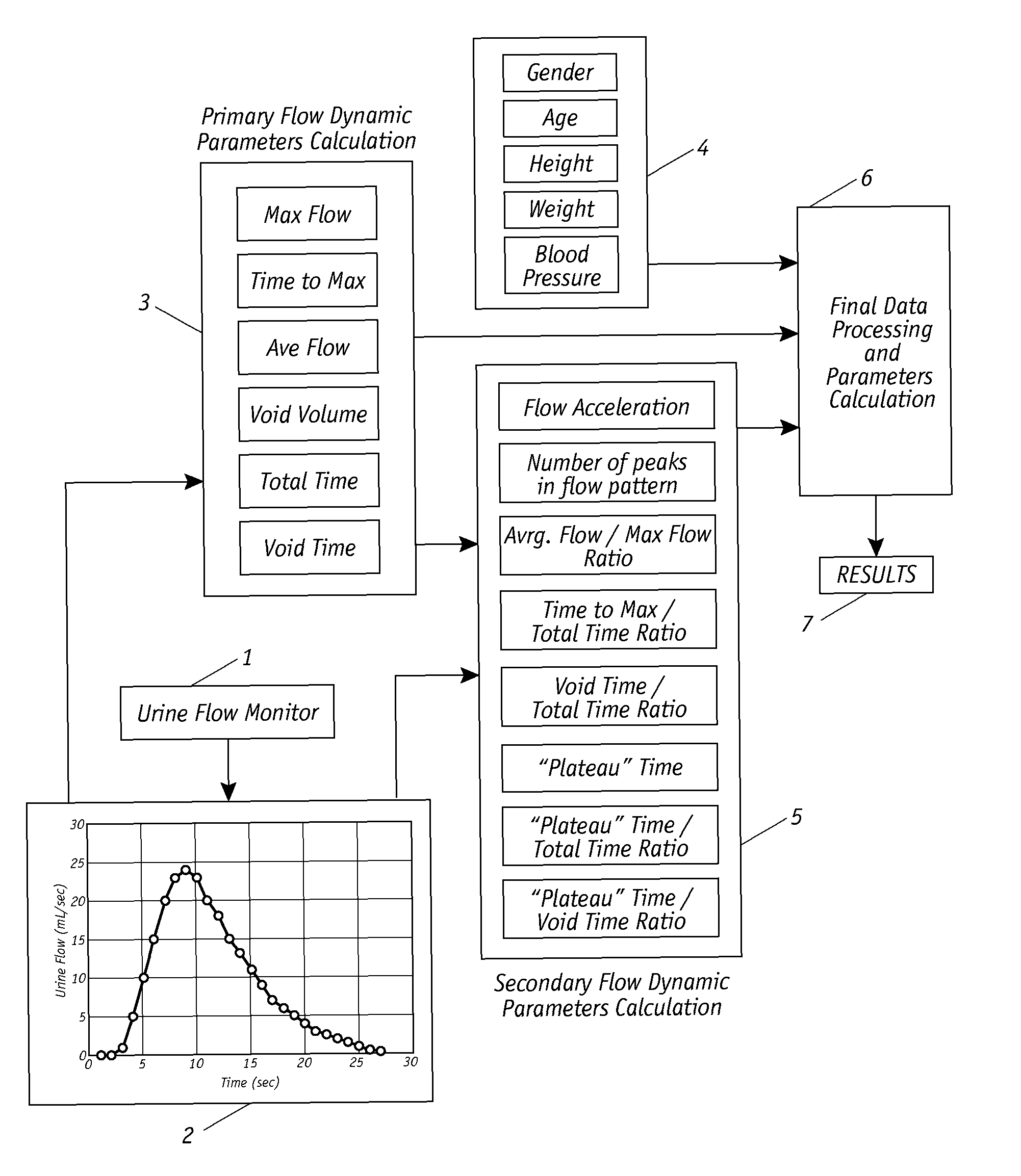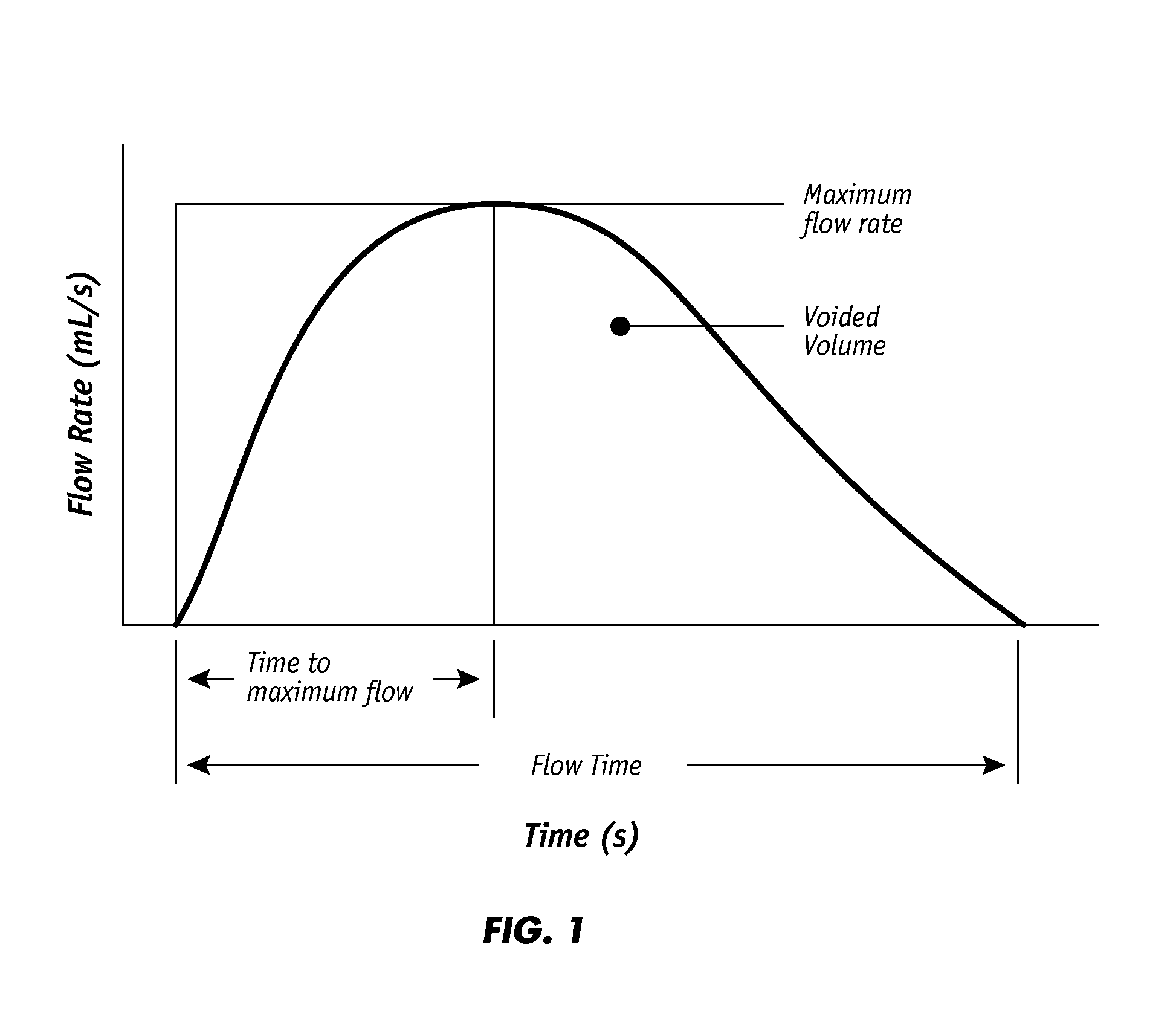Method of Diagnosing Urological Disorders
- Summary
- Abstract
- Description
- Claims
- Application Information
AI Technical Summary
Benefits of technology
Problems solved by technology
Method used
Image
Examples
Embodiment Construction
[0023]As shown in FIG. 1, a patient's urination pattern is monitored using a urine flow monitor 1 which can be any suitable urine flow meter that yields urine flow data. Commercially available monitors include, for example, mechanical urine flow meter devices that include a container having a graduated scale for indicating the volume of urine within the container. Urine flow is detected by observing the change in volume as the patient voids into the container. Electrical urine flow meters for providing urine flow data have a urine velocity-measuring apparatus in the form of a urine flow receptacle with a paddle wheel journaled therein. The paddle wheel is mechanically linked to a generator, which produces an output voltage that is displayed on a voltmeter. The velocity of the urine stream impinging on the paddle wheel determines the paddle wheel velocity and therefore the output voltage of the generator. Other urine flow devices include a urine-receiving receptacle that has a pair o...
PUM
 Login to View More
Login to View More Abstract
Description
Claims
Application Information
 Login to View More
Login to View More - R&D
- Intellectual Property
- Life Sciences
- Materials
- Tech Scout
- Unparalleled Data Quality
- Higher Quality Content
- 60% Fewer Hallucinations
Browse by: Latest US Patents, China's latest patents, Technical Efficacy Thesaurus, Application Domain, Technology Topic, Popular Technical Reports.
© 2025 PatSnap. All rights reserved.Legal|Privacy policy|Modern Slavery Act Transparency Statement|Sitemap|About US| Contact US: help@patsnap.com



